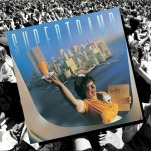SST Records

Geek obsession: SST Records
Why it’s daunting: Greg Ginn, founder of SST Records as well as its flagship band, Black Flag, recently announced the release of his own electronica-influenced music. It might have been the final straw for most SST fans—if most SST fans hadn’t given up on the label long ago. By the time Ginn started squandering SST’s good name in the late ’80s, the label had already done more than any other single entity to promote and propagate underground American rock in the post-punk era. In fact, SST’s legacy has become so exalted over the years—especially since the 2001 release of Michael Azerrad’s SST-centric history of ’80s indie music, Our Band Could Be Your Life—the label’s spotty catalog can’t possibly live up to it. Newcomers may find it especially frustrating to wade through so many of the mediocre, if not downright terrible, releases SST has put out in its 34-year history. At its height in the ’80s, though, SST not only had a solid stable of legendary bands, but also a loose but identifiable sound, one that bridged the gap between its predecessors (’70s rock, punk, and hardcore) and its successors (grunge, alternative, and indie).
Possible gateway: Hüsker Dü, New Day Rising
Why: New Day Rising isn’t Hüsker Dü’s best album, let alone SST’s. But the 1985 disc sums up everything SST stood for circa 1985, just as Ginn was cementing its position as America’s premier indie label. New Day Rising has far less sprawl—sonic or conceptual—than its predecessor, Zen Arcade, but that’s what makes the album such an immediate gateway: Bundled into a far more concise package (even though it’s still 16 songs long), New Day Rising’s potent concoction of raging punk, ragged pop, heartfelt folkiness, arty eccentricity, and classic-rock bombast boils down all the elements that make Zen Arcade a masterpiece—and that made SST an institution. Not to read too much into one of the disc’s signature anthems, “Celebrated Summer,” but New Day Rising in many ways exemplifies the celebrated summer of SST’s own mid-’80s heyday.
Next steps: SST started in 1978 as a punk label, and it went on to release many groundbreaking (and/or underappreciated) punk classics, including Saccharine Trust’s Paganicons and The Dicks’ Kill From The Heart. Black Flag, though, led the charge—and it made its mangled, indelible mark on the world with 1981’s Damaged. The debut full-length by Ginn’s famed outfit is also the first Black Flag record to feature its fourth, final, and most famous singer, Henry Rollins. Historical importance aside, Damaged simply slays; explosive and savagely erratic, the album starts out lean and vicious before devolving into a grim, primordial sludge that hints at experimentation to come—not just by Black Flag or even SST as a whole, but by the entire American rock underground they’d both go on to inspire.
Double albums aren’t always the easiest dose for a newcomer to swallow. Not so with the Minutemen’s Double Nickels On The Dime. The beloved San Pedro group’s opus was released in 1984, and it’s grown in stature ever since—not only because it’s a dizzying outpouring of soulful inventiveness, but because it never, ever gets old. Showing the world that funky post-punk didn’t have to be stiff or English, D. Boon and crew infuse every moment of the album’s staggering 45 tracks with a blistering yet deeply poignant humanism. After Boon’s death in 1985, survivors Mike Watt and George Hurley regrouped with singer-guitarist Ed Crawford to form another great SST band, fIREHOSE—but fIREHOSE was fated to be forever overshadowed by the Minutemen. And Double Nickels cast the lion’s share of that shadow.









![Rob Reiner's son booked for murder amid homicide investigation [Updated]](https://img.pastemagazine.com/wp-content/avuploads/2025/12/15131025/MixCollage-15-Dec-2025-01-10-PM-9121.jpg)

























![HBO teases new Euphoria, Larry David, and much more in 2026 sizzle reel [Updated]](https://img.pastemagazine.com/wp-content/avuploads/2025/12/12100344/MixCollage-12-Dec-2025-09-56-AM-9137.jpg)




